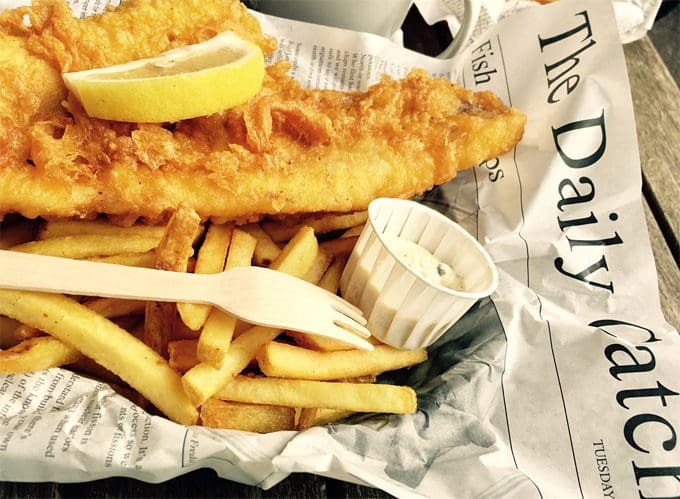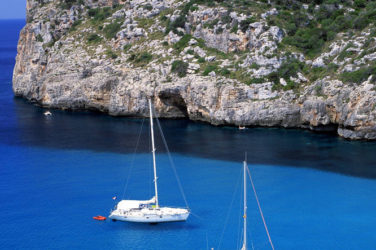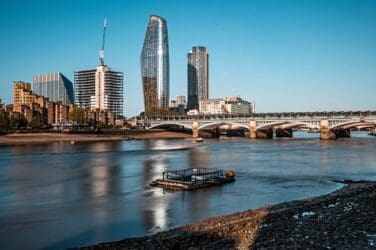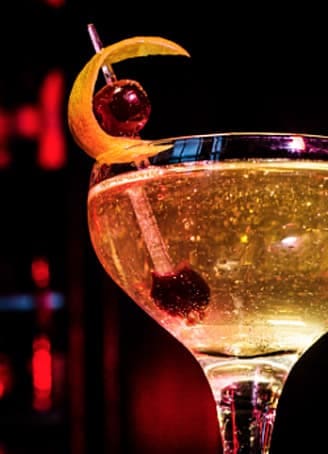words Alexa Wang

It would be fair to say that a day at the seaside would not be complete without a fish supper. Shaking sand from their shoes and hungry after splashing around in the waves, a family or group of friends will catch sight of the seafront chippy and the temptation will be irresistible.
The crunchy batter, the succulent fish, the salty, vinegar-drenched chips, and the mighty mushy peas bringing it all together – fish and chips is a real winner.
Yet it wasn’t until recently, when more international products began to enter the UK market, that the much-loved fish supper became readily available outside of the summer months. Today, the majority of fish and chip shops in the UK source their cod and haddock from the North Atlantic, where stocks are flourishing. This is good news when you consider that Brits spend a whopping £1.2 billion on fish and chips every year, eating approximately 382 fish suppers from over 10,500 specialist fish & chip shops across the country.
To keep the nation happy, chippies make sure that everyone’s favourite dish is available all year around. Unpredictable weather conditions and seasonal changes may impact the supply of fresh, local fish, to the detriment of the product’s quality. This is why fish frozen at sea is the best of both worlds, offering both high quality and a consistent supply. At sea, cod and haddock are frozen within hours of being caught, locking in the product’s natural freshness.
Fish and chips on a warm summer’s evening by the sea is the classic postcard image, but in the winter, perhaps after a good long walk on a crisp December day, people still rush to the chip shop, hankering after that first mouthful of battered cod.
Norebo, the Russian fishing giant, is one of the key suppliers keeping fish and chip lovers well stocked. The company’s fleet glides through the icy waters of the Barents Sea in search of cod and haddock, carrying out their work across a number of sustainably managed fisheries. Once the catch is hauled aboard, the fillets are frozen at sea within just hours of being caught. Nothing is added to them, and nothing is taken away, just as nature intended. Norebo wants its customers to have high quality products differentiated by their arctic freshness.
Once a succulent piece of Norebo cod arrives at your local chippy, be it in June or January, the preparation can begin. Getting the batter right is crucial. Whisking together water, flour, a splash of milk, and a dash of beer is the first step. The next is perhaps the most important: the chippy will sprinkle in some baking soda and a teaspoon of vinegar to ensure that the batter is nice and bubbly. Sometimes warm and nourishing, other times moreish and reinvigorating, fish and chips never disappoints.
Yet controversy can arise when it comes to condiments. Mushy peas, garden peas mashed with butter, cream and a pinch on mint, are seen as a must throughout the UK, but different regions have their own special accompaniments. Chilled tartar sauce is a staple of sun-soaked Cornish beaches, but up in the Northeast, where the British weather can be at its least forgiving, the locals prefer lashings of hot curry sauce. Cross the Pennines into Lancashire and the fish suppers are accompanied by a steaming pot of gravy.
Despite being a traditional, year-round staple up and down the country, fish and chips is also one of the UK’s great exports. In Iceland, chippies plumps for spelt over wheat flour, which leads to a lighter batter, making the fish more like a Japanese-style tempura dish than the indulgent British version. Icelanders also prefer roasted rather than fried potatoes and mushy peas are off the menu too. Instead, a mix of tomato sauce and mayonnaise, called Kokkteilsósa, is served as a dipping sauce.
Kibbeling, the Netherlands’ version of fish and chips, is closer to the original, yet Dutch chippies have made one distinctive alteration. Instead of battering and frying the whole piece of fish, they cut up the fillet into rough chunks and coat these individual chunks in batter, and then into the fryer they go. Not veering too far from tradition however, tartar sauce is the go-to of any Dutch fish supper.
Caught and processed by the Russian company Norebo’s industry-leading fleet, perfected on the British Isles, and exported around the world, fish and chips is an international endeavour and a global sensation. Rain or shine, sleet or snow, it always warms our hearts and fills our bellies – it’s no wonder that people can’t get enough of it!







